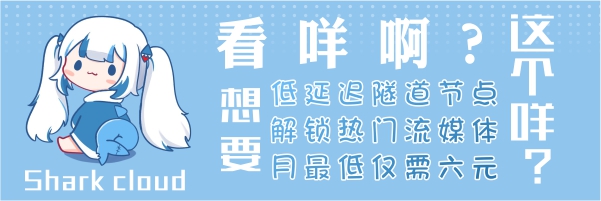This Week In Retro: Gradius
May 1985: The Viper is coming
by Diamond Feit

Despite what some legislators would have you believe, corporations are not people. Corporations cannot create; people create. We scribble, we tinker, we experiment. We err and flub and blunder until we get things right. Corporations can own the rights to our work but don't get it mixed up: Human beings, not companies, made all the things you love.
I want to lay this out at the start because 40 years ago, the dedicated professionals at Konami were on a roll. In early 1985 the company introduced an adorable take on Namco's Xevious with TwinBee, kicking off the niche-yet-enduring "cute-em-up" genre. Unfortunately, we don't know for sure which staffers actually crafted Donburi Island. Japanese wikis and nicknames on the default high score list suggest future executive vice president Akihiko Nagata participated in TwinBee's development but what role he played remains unclear.
We do know that aside from making TwinBee, Konami's developers continued to eye Xevious as the game to beat in the scrolling shooter genre. Konami had produced Scramble back in 1981, a side-scrolling shooter that demanded players split their focus and fire different weapons at airborne targets and ground-based targets. Two years later Namco's horizontally-scrolling Xevious used that exact concept and took over Japanese arcades.
This motivated Konami's internal teams to consider a sequel to Scramble that might "surpass Xevious" according to a 1999 Game Hihyō interview* with Hiroyasu Machiguchi. In a separate 1996 interview* Machiguchi described himself "as a programmer and as the team leader" of this ambitious project. His crew spent at least a year refining their ideas—an unusually long timeframe for the era—and continued to make adjustments even after conducting location tests.
40 years ago this month, the efforts of Machiguchi and his teammates resulted not in Scramble II but Gradius, a game so influential that even if you've never played it, you're likely aware of at least one of its innovations.
Like its 1981 progenitor, Gradius features a space fighter that flies from left to right through a series of interplanetary stages. The vessel—identified in home port documentation as Vic Viper—enters combat with a single cannon. Each area opens in outer space as small enemies approach in formation. Should players destroy an entire group before they scuttle out of range, they drop a glowing orange Power Capsule. Other individual orange-tinted enemies likewise offer up Capsules once destroyed.
Through these Power Capsules, Gradius allows players to not only enhance the Vic Viper, but to control how the ship grows stronger. A menu bar at the bottom of the screen displays six potential add-ons; collecting a Capsule advances the indicator one step to the right. When players get enough capsules to highlight the selection they want, they press a button to upgrade the Vic Viper.
Speaking to Game Hihyō magazine, Hiroyasu Machiguchi said "We wanted to give the players freedom in their choices. Not just the choice of whether to pick up an item or not pick it up, but something more detailed." They initially considered dedicated items but fretted over how to best design a sensible inventory system for an arcade machine. A solution came to them from the very keyboards they used every day. "We got a flash of inspiration from the way the function keys on personal computers of that time were laid out," said Machiguchi, "It was their layout and arrangement that gave us the image for the power up gauge."
While we consider power-ups a shooter staple today, games in the mid-80s did not necessarily include any such luxuries. In a 1993 interview* Akihiko Nagata credited the genesis of Gradius' system to the spread of customizable software from overseas. "At that time, Western computer RPGs were coming into Japan, and 'building your character' was a kind of new gaming buzzword," he said, "We were thinking of ways to bring that concept into the STG genre."
The flexibility of the Power Capsules coupled with the tension of the combat make Gradius remarkable, but the developers also wanted players to feel like they were on a journey beyond the stars. As Machiguchi put it in 1999, "I think having a unique world and setting was one of Gradius’ defining points." Each level begins with Vic Viper soaring through outer space before entering a more structured area. Introducing varied terrain not only helps to define each stage as its own unique environment, but it also increases the overall threat level as contact with any surface will destroy the Vic Viper.
The layouts of Gradius' seven stages vary in theme and complexity. Things start off with a straightforward tunnel of rock which has enemies carefully positioned on both the upper and lower strata. Stages two and three add vertical scrolling to the horizontal as enemies occupy small islands in the middle of the screen; scrolling up or down will bring new hazards into view as others disappear. The last two stages are particularly challenging as they use narrow passages and devious enemy placement to form choke points; this includes a solid wall that slowly slams shut in front of the final boss, preventing cautious players from even entering the chamber and forcing them to lose one life.
One unusual design choice in Gradius helped turn a Polynesian curiosity into a Japanese pop culture icon. Amongst erupting space volcanoes and floating asteroids, Vic Viper has to survive a gauntlet of energy-spewing Moai heads. Machiguchi explained their presence in 1996, saying they added a "mysterious image to the game." He likened the Moai heads in Gradius to the use of Nazca lines—originally from Peru—in Xevious. Whatever Machiguchi's reasoning, the stone faced monuments became regulars not just in Gradius but Japanese games in general; the website moai.games tracks all such appearances and has recorded 118 examples from Konami alone.
Gradius found immediate success in arcades, although international distributors must have balked at its head-scratching title. Initial overseas cabinets rebranded both the game and the central vessel as Nemesis. A 1986 Famicom port found an even larger fanbase; Konami sold over one million Gradius cartridges and the shooter placed second in Famitsu's poll for the best game of 1986, yielding first place to the hugely popular Dragon Quest.
Gradius came to the NES later that same year carrying the original title although with a few edits. Instead of Vic Viper, English instruction manuals call it the Warp Rattler. A wide array of home computer ports soon followed, some sticking with Gradius with others adopting the Nemesis moniker. Today Konami has unified the series under the Gradius banner worldwide, although this includes spinoffs like Salamander/Life Force which is its own can of worms.
Regardless of which name appeared on the title screen in your region, the Famicom/NES port of Gradius actually has the longest legacy of all versions thanks to a secret addition by programmer Kazuhisa Hashimoto. Under pressure to translate the notoriously difficult shooter to a new platform, Hashimoto struggled whenever he had to playtest it himself. In order to ease his pain he added a cheat code that instantly granted the Vic Viper missiles, two support options, and a full shield. As translated and reported by 1up.com, Hashimoto told Domimaga Magazine "I just put in something I could remember easily."
Today, Hashimoto's selection of Up, Up, Down, Down, Left, Right, Left, Right, B and A stands as perhaps the most well-known string of inputs in any video game ever made. Beyond its use in other Konami products—lending it the nickname "the Konami code"—other programmers quickly adopted it in their own projects. That includes non-games like the Bank of Canada's website, Amazon's virtual assistant Alexa, and Discord.
I discovered Gradius on the NES having only vague memories of Scramble and no knowledge of Xevious at all. At the time I compared it favorably to Defender given that I could actually play Gradius for more than 53 seconds without getting blown to smithereens. I loved the variable power up system even though my Vic Viper always ended up with the same loadout; call it a case of the journey being more important than the destination.
Whether you avail yourself of Hashimoto's shortcut or not, Gradius demands dutiful practice and quick reflexes. It doesn't take long for the opposition to litter the screen with small but lethal bullets. The sheer amount of hazards actually works in players' favor as the excessive number of sprites causes the game to slow down, giving Vic Viper more time to react to incoming fire. In 1996 Machiguchi acknowledged this as a happy accident, saying "I think for Gradius all the bugs ended up having a positive effect on the game, and I think we were extremely lucky in that regard."
These scattered anecdotes from the many individuals who collaborated to make Gradius a reality hammer home my point about heralding developers over their employers. Konami as a corporation has spent the necessary funds to keep Gradius in print and available on each new generation of consoles and computers; an upcoming 2025 collection will even include a new game—a first since 2008.
Yet have the people responsible for Gradius' enduring popularity over the last four decades benefitted from these re-releases? Most versions of these games include no credits whatsoever, forcing us to rely entirely on colloquial information translated by third parties to even know whose contributions made video game history.
These issues of improper attribution are not unique to Gradius or Konami, but it does remind me of how carefully the company branded their games in the 80s to convince consumers that those silver-bordered boxes represented a mark of quality. The fact that we still call Hashimoto's backdoor secret "the Konami code" also highlights the disparity between the publisher and their nigh-anonymous artisans. I can only hope this latest Gradius compilation includes a proper staff roll that celebrates all the brave souls who enabled the Vic Viper to wing its way around the Earth.
Writer/podcaster/performer Diamond Feit lives in Osaka, Japan but xer work and opinions exist across the internet.
*These three interviews were all translated into English by the fine folks at Shmuplations.






.gif)

.gif)

.gif)
.gif)
.gif)
_1064.gif)

.gif)
.gif)
.gif)












.png)







